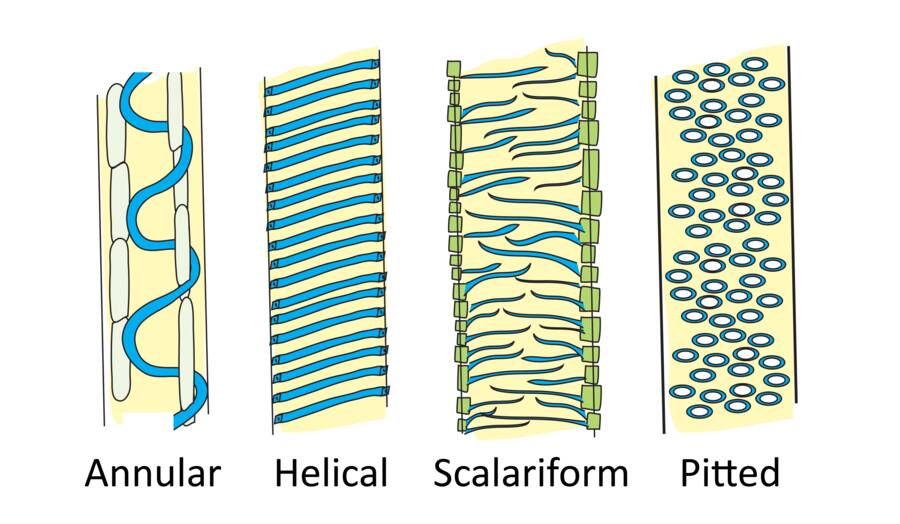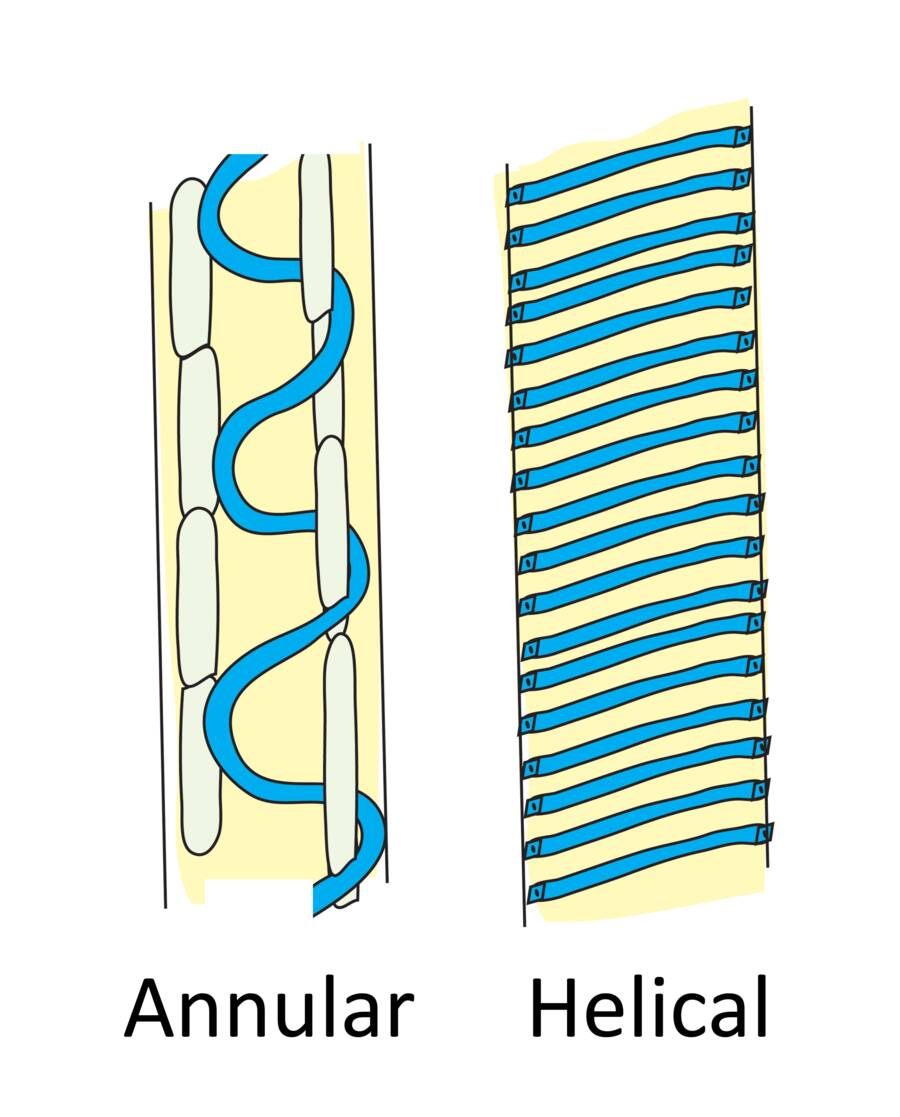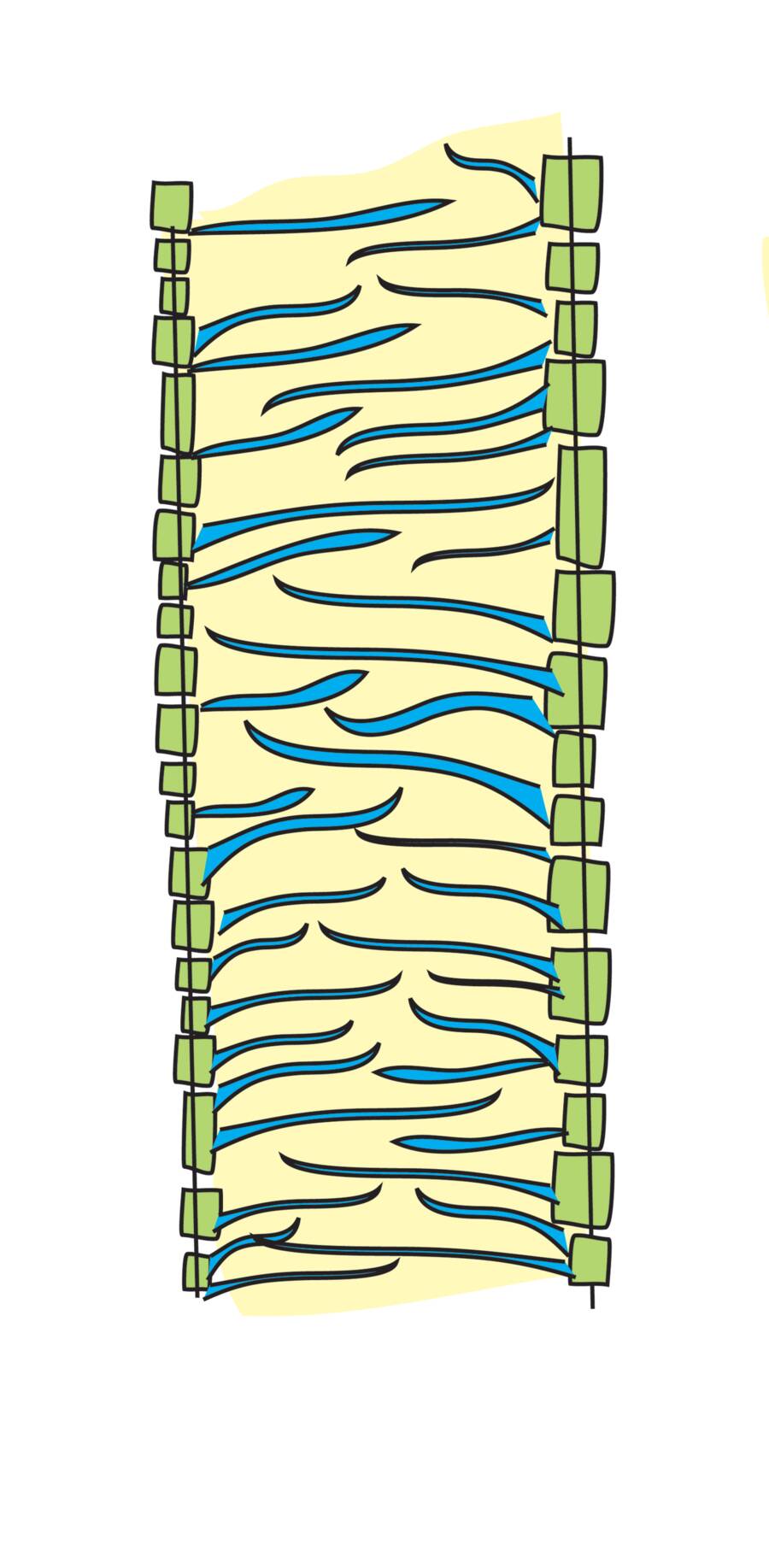Xylem is a tissue system consisting of specialized cells with lignified secondary cell walls responsible for water movement through the plant.

What is lignified?
Cells with secondary cell wall thickening typically contain lignin. Lignin is a chemical substance that resists breakdown. Along with cellulose, lignin gives wood its strength. This allows trees to attain great size.
here are 2 types of xylem cells:
- Tracheids
- Vessel Elements
Their primary function is for water transport.

A tracheid is a xylem element that does not have end wall openings.
Water moves through side wall pits only.
They are common in gymnosperms and function to conduct water.

A vessel element is a xylem cell with overlapping end wall perforations. They are more evolutionarily advanced than the tracheid.
Their function is to conduct water.
Vessel elements overlap to connect end-to-end to support water conduction.
They are non-living at maturity.

Primary xylem is an early stage of xylem development.
It is made of protoxylem and metaxylem.

In the protoxylem, the secondary walls form first as annular and then as helical side walls.
This is followed by scalariform and then pitted side walls in metaxylem.

Protoxylem with annular and helical secondary wall thickening.


The final stages of metaxylem formation is scalariform thickening that eventually leads to pitted sidewalls.


Notice how there are connections (arrow 1) between xylem elements through the sidewall pits that will allow water to flow between cells.

Pitted
Secondary xylem is xylem tissue formed from the vascular cambium that is responsible for lateral growth in a stem.
Secondary xylem equals wood formation.
Wood is made of mature xylem with full secondary wall thickening. Except for the ray tissue, secondary xylem is non-living at maturity. (Rays are described under parenchyma cells).

Annual rings are the amount of xylem growth that takes place during one season in the secondary xylem.
Xylem can remain functional for many years. However, phloem is crushed by the expanding xylem and there is only a small outer ring of functional phloem elements made every year.

Counting annual rings is used to discover the age of large trees.



